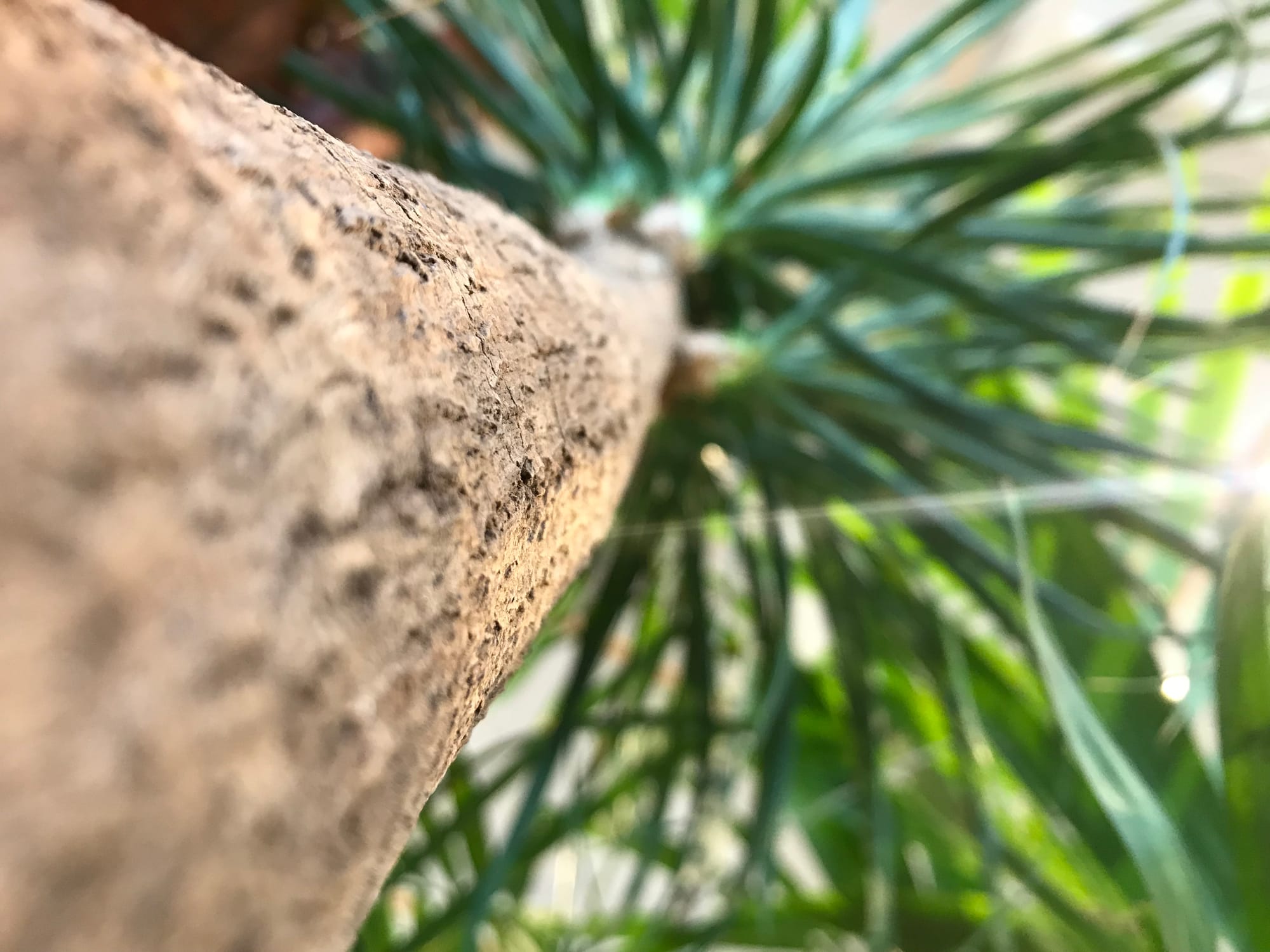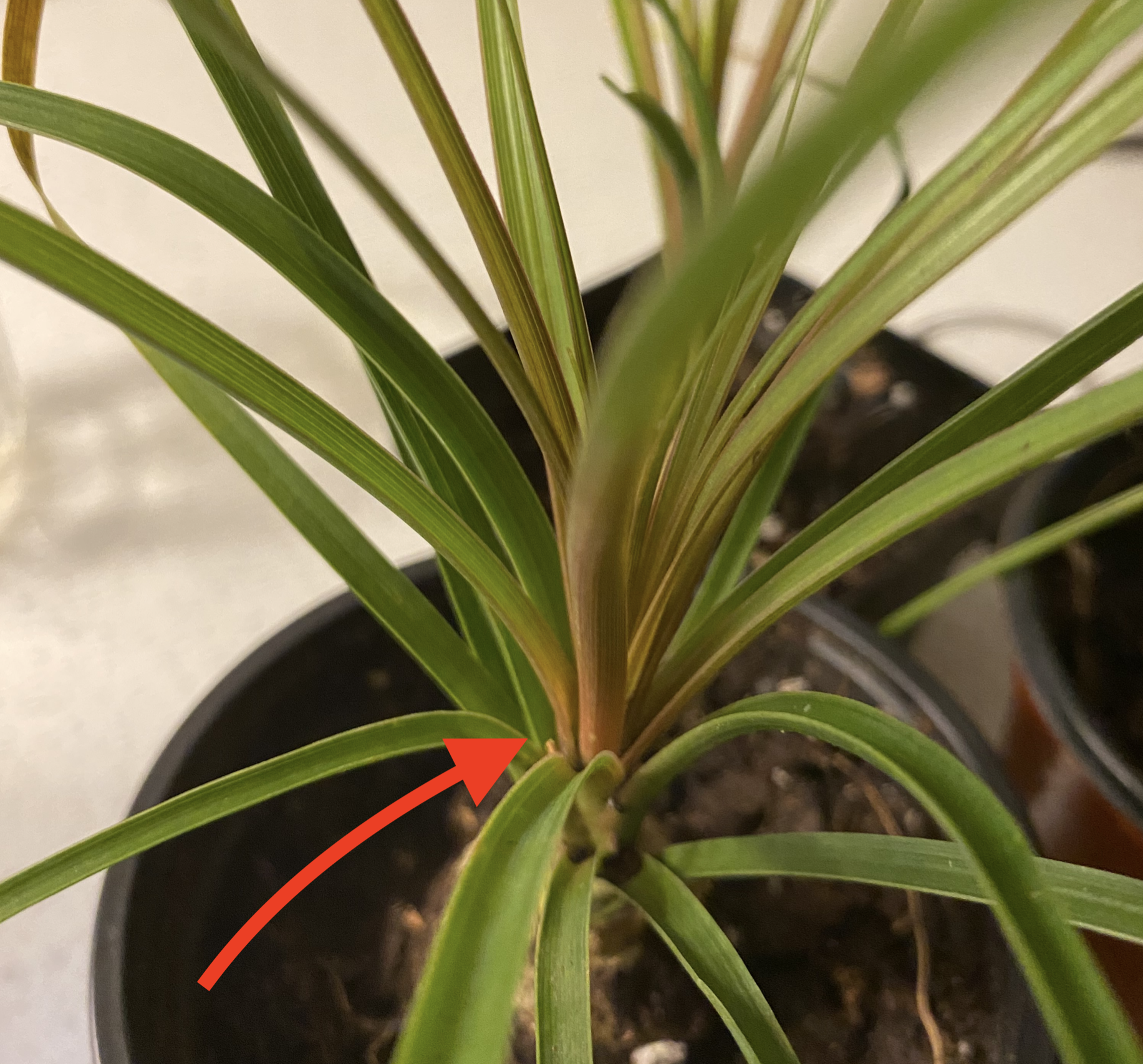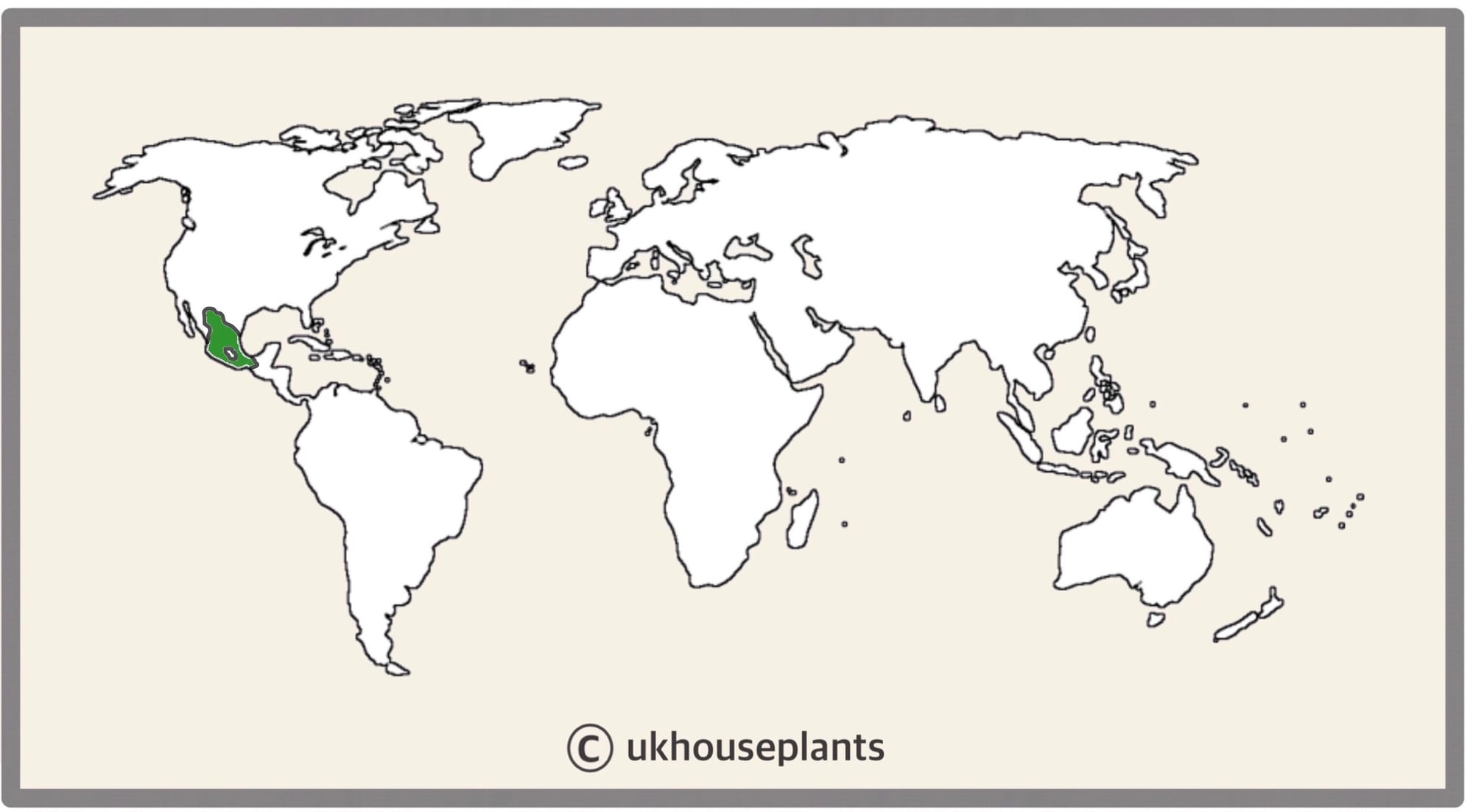
Beaucarnea recurvata
Contents
- Top Tips
- Location, Water, Humidity & Fertilisation
- Common Issues
- Origins, Temperature, Propagation, Repotting & Toxicity.
Need the answer to a specific plant query? Book a 1-to-1 video call with THE HOUSEPLANT DOCTOR™, the website's friendly author, to overcome and address your niggling problem! Available on iMessage, WhatsApp, Facebook Messenger & more.
Top Tips & Info
- Care Difficulty - Easy
- Provide a few hours of direct sunlight per day, but always prevent excessive exposure during the summer months. Avoid shady locations at all costs.
- Allow the majority of the soil to dry out in between waters, reducing this further in the autumn and winter. It's always better to under-water, than over-do it with Ponytail Palms.
- Fertilise the soil every few months with either a 'Houseplant' or 'Cactus' labelled fertiliser, depending on the season.
- Repot three years using a 'Cactus & Succulent' potting mix - this is a good time to propagate basal offshoots that develop around the base.
- Keep an eye out for mould developing on the soil, as this is a clear and worrying sign of over-watering.
Location & Light - 🔸🔸🔸
A shady location must be off the cards at all costs. If possible, throw in some direct sun, avoiding intense sunlight during the peak hours of summer as this can easily lead to sun scorch. It's also highly beneficial to place a Ponytail Palm outside in summer, as long as the nighttime temperatures are above 10°C (50°F) in a semi-shaded environment for better quality growth.
The ideal location around the house would be in a partially heated conservatory or within three metres of a north, east or west-facing window. Within two metres of a south-facing window is also acceptable during the autumn and winter, but it'll be too intense in the height of summer.
Water - 🔸
Even though Ponytail Palms aren't a succulent, the ukhouseplants saying of 'droughts between drenches' should strongly be associated with them. Not only will over-watering lead to root rot, but it can also travel into the core of the plant (the trunk), destroying the plant from the inside out. In the spring and summer, allow the soil to almost dry out before giving a generous drench, while reducing this further in the colder months. A trick to reduce the chances of root rot (common) is to water over a sink, or somewhere that the excess moisture can freely drain out to reduce the possibility of the fungal disease. Under-watering symptoms include pale leaves, stunted growth and gradual decline. Although they can endure a generous amount of sunlight, try and keep the soil moisture slightly higher for the promotion of new growth. Over-watering symptoms include yellowing leaves, zero growth and a mushy stem. Never allow the roots to sit in standing water, or allow the soil to remain soggy as both will entice root rot. The final note to mention is that for those situated in dark locations, their compost must be watered far less than those in brighter spots to downplay the risk of rot and disease.
Humidity -
This is not a necessity; however, a quick hose down from time to time will hydrate the leaves and wash away dust or potential pests.
Fertilisation - 🔸
Feed every few months using a 'Houseplant' or 'Cactus & Succulent' labelled fertiliser. Never apply a 'ready to use' product into the soil without a pre-water first, as it may burn the roots and lead to yellowed leaves. Remember that infrequent fertilisation is best for this species, as they aren't used to fertile soil in their natural habitats.
 Because of their swollen caudex, Ponytail Palms can survive up to eight weeks in a semi-shaded area without any water. Always keep this in mind when potentially over-watering.
Because of their swollen caudex, Ponytail Palms can survive up to eight weeks in a semi-shaded area without any water. Always keep this in mind when potentially over-watering.
Common Issues with Ponytail Palms
Yellowing lower leaves - If the lower leaves slowly die off over time, this is natural and inevitable. However, if there is evidence of stunted growth, overly moist soil and simultaneous lower leaf drop, relocate it to a brighter location and potentially reduce irrigations. For more severe symptoms, inspect the rootball for root rot and click on this link if it show signs of decay.
Pests could arise at any time, with infestations starting from the original nursery or via contamination in your home. Spider Mite and Mealybugs tend to be the usual inhabitants, with the first being minute and almost transparent, roaming the leaves in search of chlorophyll and a site to hide its eggs. The latter, however, will stand out much more, with white cottony webs developing across the foliage and stems. Thoroughly check the plant's cubbyholes before giving it the all-clear, or click on the appropriate links to learn more about eradicating these issues.
Transplant shock is a big issue when it comes to heavy-handed repots. Give the plant a good soak 24hrs before the action and never tinker with the roots, unless it has been affected by root rot. Typical signs of transplant shock are largely similar to under-watering, with wilting, yellowing leaves and stunted growth among the most common symptoms. Click here to learn more about addressing transplant shock, and a step-by-step guide on performing the perfect transplant.
Curled leaves and dried brown edges are the result of too little water and over-exposure to the sun. Although they can naturally do well in sun-filled locations, those that haven't acclimatised to the harsh rays will show signs of sun-scorch and environmental shock. Gradually increase the amount of light every few days, starting from an indirect location to a few hours of morning/evening sun over a few weeks. Prolonged exposure will significantly speed the process of dehydration, so consider transplantation into a bigger pot in the spring to wrap the roots around moister soil.
 If your Ponytail Palm's foliage begins to turn red or brown, this may just be a leaf-pigment change to protect itself from the sunlight. This is totally harmless and nothing needs to be done!
If your Ponytail Palm's foliage begins to turn red or brown, this may just be a leaf-pigment change to protect itself from the sunlight. This is totally harmless and nothing needs to be done!
Never allow temperatures to dip below 8ºC (46ºF) as irreversible damage will occur in the likes of yellow foliage and a weakened health. When this happens, remove the severely affected areas and immediately improve growing conditions - never cut through softened yellow growth, and only around brown, crispy squares. As rehabilitation can take several months because of its slow-growing nature, be sure to provide a stable location with better growing conditions to speed this process.
Mould developing on the soil means two things - too little light and over-watering. Despite the harmlessness of the mould, it'll prove unsightly to most gardeners and is therefore removed once known. To remove, replace the top two inches of the soil for a fresh batch of 'Cactus & Succulent' compost. Either increase the amount of light received (no direct sunlight for the first few weeks to prevent environmental shock) or decrease the frequency of waters slightly. If the mould is accompanied by yellowing lower leaves, you may also have a case of root rot.
Origins
Beaucarnea derives from Latin, translating to 'good harvest' with the genus symbolising both strength and imperturbability. The B. recurvata was first formally described in 1861 by a French botanist, Charles Lemaire who had a keen interest in ferns and seed-baring plants. Despite its firm place as a Beaucarnea today, 20th-century taxonomists initially placed the genus in Nolinoideae (hence the synonym, Nolina) but were reclassified back as Beaucarnea after extensive genetic research.
 The Distribution of Ponytail Palms
The Distribution of Ponytail Palms
Temperature
10° - 27°C (50° - 80°F)
H1c (Hardiness Zone 11) - Can be grown outdoors between late spring and summer throughout most of the UK while nighttime temperatures are above 10℃ (50℉). If you decide to bring the plant outdoors, don't allow it to endure more than an hour of direct sunlight a day as it may result in sun-scorch. Regularly keep an eye out for pests, especially when re-introducing back indoors.
Spread
Over 2m in height and 0.7m in width once they reach maturity. The ultimate height will take between 8 - 20 years to achieve with up to 10cm of growth per season.
Pruning & Maintenance
Remove yellow or dying leaves, and plant debris to encourage better-growing conditions. While pruning, always use clean scissors or shears to reduce the chance of bacterial and fungal diseases. Never cut through yellowed tissue as this may cause further damage in the likes of diseases or bacterial infections. Remember to make clean incisions as too-damaged wounds may shock the plant, causing weakened growth and a decline in health.
Propagation
Via Seed & 'Pup' Cuttings.
Basal Offset Division - Your plant will produce several basal offsets that can be separated once they have a sufficient root system, and surpass 30cm (11 inches) in height. If possible, water the soil 24hrs before the main event to reduce the risk of transplant shock, when its dry root systems are over-fingered. Take the plant out of its pot and place your fingers close to the nodal junction - soil may have to be removed for better access. Push the chosen offset downwards until you hear a snap. Separate the foliage and its root system away from the mother plant, mentally noting the high risk of damage. Transplant in the appropriate sized pot with a fresh batch of 'Cactus & Succulent' compost. Maintain evenly moist soil and situate it in a bright, indirect location away from any direct sunlight. After ten weeks, treat it like a normal specimen, following the care tips above!
Flowers
Ponytail Palms will only bloom once maturity is reached, with their flowers largely resemble those of Yuccas. Feather-like panicles of white or red flowers will erect high above its foliage, in the attempt of attracting airborne pollinators. The blooming period can last up to several weeks in the summer, with the seedpods taking up to three months to fully develop.
 The inflorescences of a Beaucarnia recurvata.
The inflorescences of a Beaucarnia recurvata.
Repotting
Repot every three years in the spring, using a 'Cactus & Succulent' Compost and the next sized pot with adequate drainage. If you have any Bonsai Compost on hand, this will also do the trick, too. Hydrate the plant 24hrs before tinkering with the roots to prevent the risk of transplant shock. For those that are situated in a darker location, add a thin layer of small grit in the pot's base to improve drainage and downplay over-watering. Click here for a detailed step-by-step guide on transplantation, or via this link to learn about repotting with root rot.
Book a 1-to-1 video call with THE HOUSEPLANT DOCTOR™ if you'd like a personal guide to repotting your houseplant. This will include recommending the right branded-compost and pot size, followed by a live video call whilst you transplant the specimen for step-by-step guidance and answer any further questions!
Pests & Diseases
Keep an eye out for mealybugs, aphids, spider mites, scale, thrips, whitefly, blackfly, vine weevils & root mealybugs that'll locate themselves in the cubbyholes and undersides of the leaves, with the exception of the latter two in the soil. Common diseases associated with this plant are root rot, leaf-spot disease, botrytis, powdery mildew & southern blight - click here to learn more about these issues.
Toxicity
This plant is classified as poisonous so keep away from pets and children who have tendencies to eat the leaves. If parts of the plants are digested, vomiting, nausea and a loss of appetite could occur. Consumption of large quantities must be dealt with quickly; acquire medical assistance for further information.
Please note that the leaves' edges are razor sharp, so always wear protective gloves when handling.
Retail Locations
IKEA, Online Stores.
Book a 1-to-1 Call with THE HOUSEPLANT DOCTOR™
If you need further advice with your houseplants, book an advice call with ukhouseplants' friendly and expert writer today! This can be done via a video or audio call on most apps, including Facebook, FaceTime & Skype. A ten-minute call costs £5.99 (US$7), or £15.99 for thirty minutes. You can ask multiple questions, including queries on plants, pests, terrariums, repotting advice and anything in between. Please consider supporting this service to keep ukhouseplants thriving!